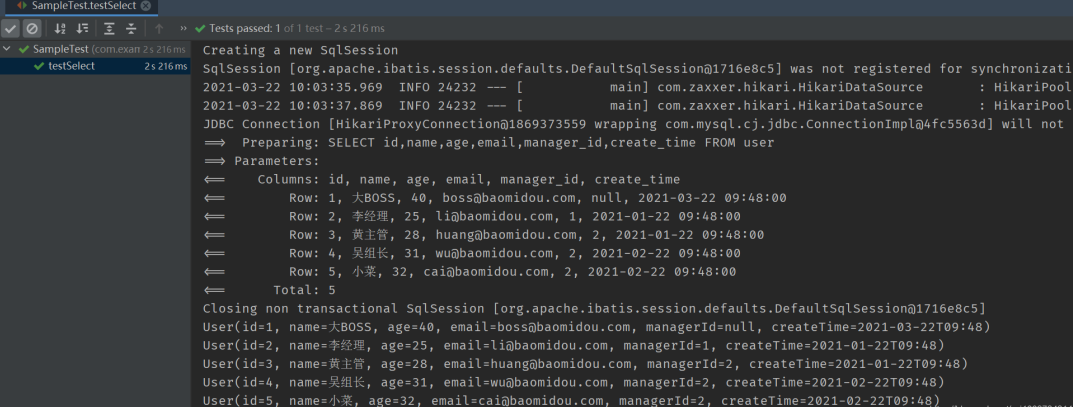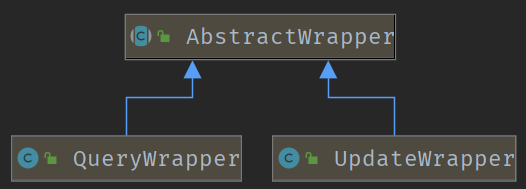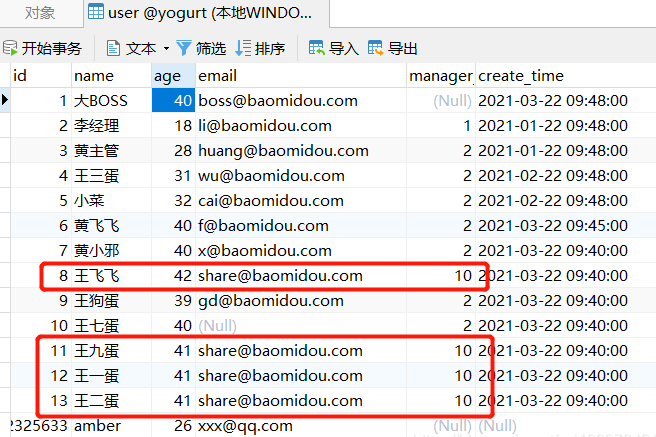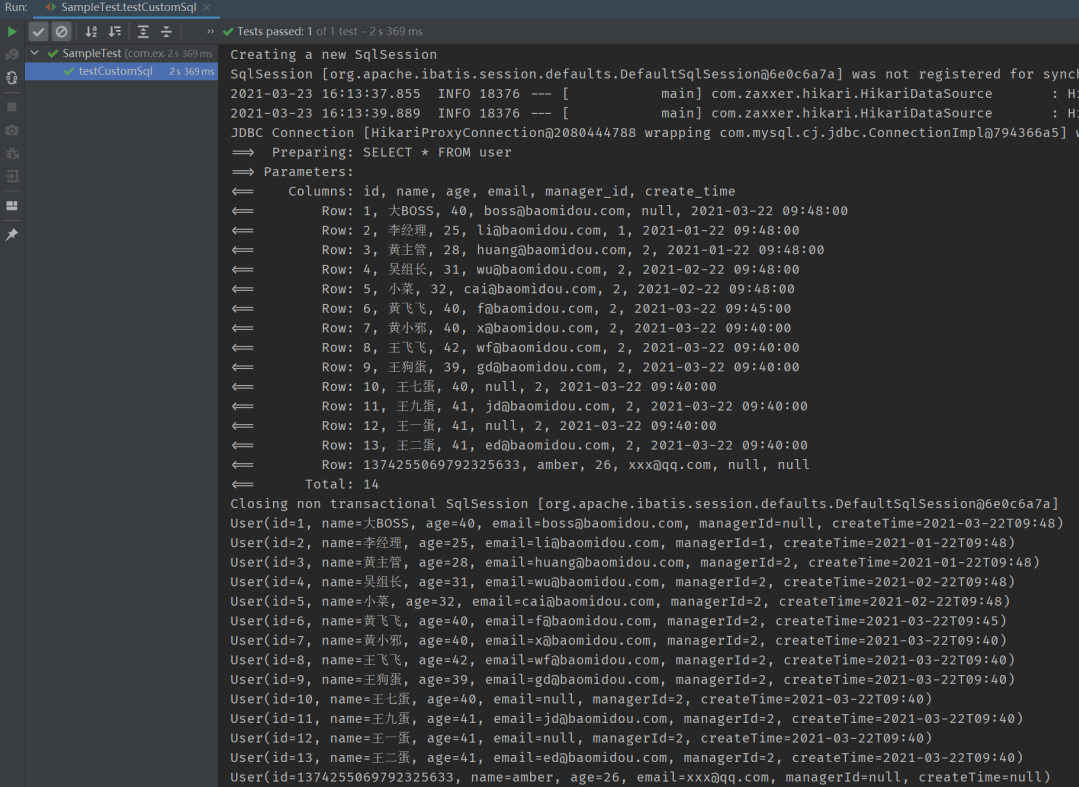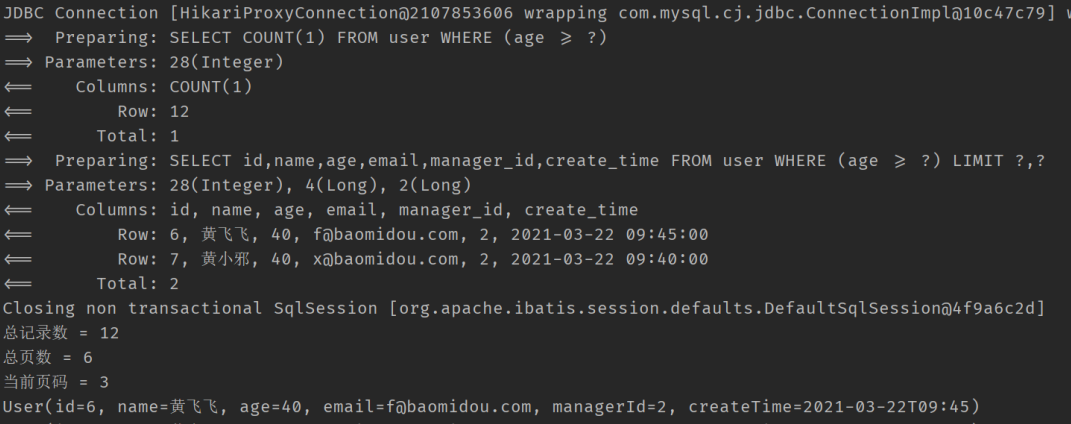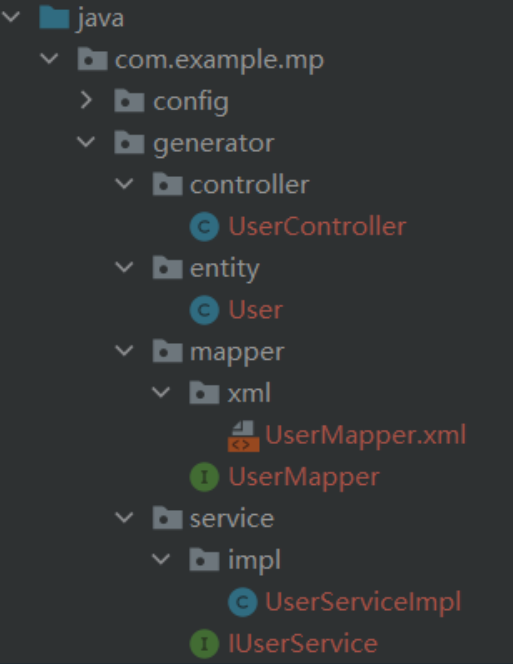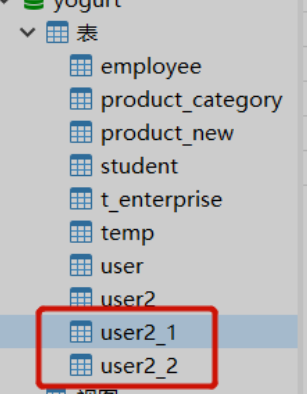MyBatis-plus 是一款 Mybatis 增强工具,用于简化开发,提高效率。下文使用缩写 mp来简化表示 MyBatis-plus,本文主要介绍 mp 搭配 Spring Boot 的使用。
官方网站:www.baomidou.com
1. 快速入门
创建一个Spring Boot项目。
导入依赖1 2 3 4 5 6 7 8 9 10 11 12 13 14 15 16 17 18 19 20 21 22 23 24 25 26 27 28 29 30 31 32 33 34 35 36 37 38 39 40 41 42 43 44 45 46 47 48 49 50 51 52 53 54 55 56 <?xml version="1.0" encoding="UTF-8" ?> <project xmlns ="http://maven.apache.org/POM/4.0.0" xmlns:xsi ="http://www.w3.org/2001/XMLSchema-instance" xsi:schemaLocation ="http://maven.apache.org/POM/4.0.0 https://maven.apache.org/xsd/maven-4.0.0.xsd" > <modelVersion > 4.0.0</modelVersion > <parent > <groupId > org.springframework.boot</groupId > <artifactId > spring-boot-starter-parent</artifactId > <version > 2.3.4.RELEASE</version > <relativePath /> </parent > <groupId > com.example</groupId > <artifactId > mybatis-plus</artifactId > <version > 0.0.1-SNAPSHOT</version > <name > mybatis-plus</name > <properties > <java.version > 1.8</java.version > </properties > <dependencies > <dependency > <groupId > org.springframework.boot</groupId > <artifactId > spring-boot-starter</artifactId > </dependency > <dependency > <groupId > org.springframework.boot</groupId > <artifactId > spring-boot-starter-test</artifactId > <scope > test</scope > </dependency > <dependency > <groupId > org.springframework.boot</groupId > <artifactId > spring-boot-configuration-processor</artifactId > </dependency > <dependency > <groupId > com.baomidou</groupId > <artifactId > mybatis-plus-boot-starter</artifactId > <version > 3.4.2</version > </dependency > <dependency > <groupId > mysql</groupId > <artifactId > mysql-connector-java</artifactId > <scope > runtime</scope > </dependency > <dependency > <groupId > org.projectlombok</groupId > <artifactId > lombok</artifactId > </dependency > </dependencies > <build > <plugins > <plugin > <groupId > org.springframework.boot</groupId > <artifactId > spring-boot-maven-plugin</artifactId > </plugin > </plugins > </build > </project >
配置数据库
1 2 3 4 5 6 7 8 9 10 11 spring: datasource: driver-class-name: com.mysql.cj.jdbc.Driver url: jdbc:mysql://localhost:3306/yogurt?serverTimezone=Asia/Shanghai username: root password: root mybatis-plus: configuration: log-impl: org.apache.ibatis.logging.stdout.StdOutImpl
创建一个实体类
1 2 3 4 5 6 7 8 9 10 11 12 13 package com.example.mp.po; import lombok.Data; import java.time.LocalDateTime; @Data public class User { private Long id; private String name; private Integer age; private String email; private Long managerId; private LocalDateTime createTime;
创建一个mapper接口
1 2 3 4 5 package com.example.mp.mappers; import com.baomidou.mybatisplus.core.mapper.BaseMapper; import com.example.mp.po.User; public interface UserMapper extends BaseMapper <User> { }
在SpringBoot启动类上配置mapper接口的扫描路径
1 2 3 4 5 6 7 8 9 10 11 12 package com.example.mp; import org.mybatis.spring.annotation.MapperScan; import org.springframework.boot.SpringApplication; import org.springframework.boot.autoconfigure.SpringBootApplication; @SpringBootApplication @MapperScan("com.example.mp.mappers") public class MybatisPlusApplication { public static void main (String[] args) {
在数据库中创建表
1 2 3 4 5 6 7 8 9 10 11 12 13 14 15 16 17 DROP TABLE IF EXISTS user ; CREATE TABLE user ( BIGINT (20 ) PRIMARY KEY NOT NULL COMMENT '主键' , VARCHAR (30 ) DEFAULT NULL COMMENT '姓名' , INT (11 ) DEFAULT NULL COMMENT '年龄' , VARCHAR (50 ) DEFAULT NULL COMMENT '邮箱' , BIGINT (20 ) DEFAULT NULL COMMENT '直属上级id' , DEFAULT NULL COMMENT '创建时间' , CONSTRAINT manager_fk FOREIGN KEY(manager_id) REFERENCES user (id) = INNODB CHARSET= UTF8; INSERT INTO user (id, name, age ,email, manager_id, create_time) VALUES 1 , '大BOSS' , 40 , 'boss@baomidou.com' , NULL , '2021-03-22 09:48:00' ), 2 , '李经理' , 40 , 'boss@baomidou.com' , 1 , '2021-01-22 09:48:00' ), 3 , '黄主管' , 40 , 'boss@baomidou.com' , 2 , '2021-01-22 09:48:00' ), 4 , '吴组长' , 40 , 'boss@baomidou.com' , 2 , '2021-02-22 09:48:00' ), 5 , '小菜' , 40 , 'boss@baomidou.com' , 2 , '2021-02-22 09:48:00' )
编写一个SpringBoot测试类
1 2 3 4 5 6 7 8 9 10 11 12 13 14 15 16 17 18 19 20 21 22 23 package com.example.mp; import com.example.mp.mappers.UserMapper; import com.example.mp.po.User; import org.junit.Test; import org.junit.runner.RunWith; import org.springframework.beans.factory.annotation.Autowired; import org.springframework.boot.test.context.SpringBootTest; import org.springframework.test.context.junit4.SpringRunner; import java.util.List; import static org.junit.Assert.*; @RunWith(SpringRunner.class) @SpringBootTest public class SampleTest { @Autowired private UserMapper mapper; @Test public void testSelect () { null ); 5 , list.size());
准备工作完成,数据库情况如下:
项目目录如下:
运行测试类:
可以看到,针对单表的基本CRUD操作,只需要创建好实体类,并创建一个继承自BaseMapper的接口即可,可谓非常简洁。并且,我们注意到,User类中的managerId,createTime属性,自动和数据库表中的manager_id,create_time对应了起来,这是因为mp自动做了数据库下划线命名,到Java类的驼峰命名之间的转化。
2. 核心功能 2.1 注解 mp一共提供了8个注解,这些注解是用在Java的实体类上面的。
@TableName
注解在类上,指定类和数据库表的映射关系。实体类的类名(转成小写后)和数据库表名相同时,可以不指定该注解。
@TableId
注解在实体类的某一字段上,表示这个字段对应数据库表的主键。当主键名为id时(表中列名为id,实体类中字段名为id),无需使用该注解显式指定主键,mp会自动关联。若类的字段名和表的列名不一致,可用value属性指定表的列名。另,这个注解有个重要的属性type,用于指定主键策略。
@TableField
注解在某一字段上,指定Java实体类的字段和数据库表的列的映射关系。这个注解有如下几个应用场景。
排除非表字段
字段验证策略
字段填充策略
@Version 乐观锁注解
@EnumValue 注解在枚举字段上
@TableLogic 逻辑删除
KeySequence 序列主键策略(oracle)
InterceptorIgnore 插件过滤规则
2.2 CRUD接口 mp封装了一些最基础的CRUD方法,只需要直接继承mp提供的接口,无需编写任何SQL,即可食用。mp提供了两套接口,分别是Mapper CRUD接口和Service CRUD接口。并且mp还提供了条件构造器Wrapper,可以方便地组装SQL语句中的WHERE条件。
只需定义好实体类,然后创建一个接口,继承mp提供的BaseMapper,即可食用。mp会在mybatis启动时,自动解析实体类和表的映射关系,并注入带有通用CRUD方法的mapper。BaseMapper里提供的方法,部分列举如下:
1 2 3 4 5 6 7 8 9 10 11 insert(T entity) 插入一条记录
下面讲解几个比较特别的方法
selectMaps
该方法的使用场景如下:
只查部分列
比如
1 2 3 4 5 6 7 @Test public void test3() { new QueryWrapper<>(); select ("id" ,"name" ,"email" ).likeRight("name" ,"黄" ); List <Map <String , Object>> maps = userMapper.selectMaps(wrapper); ::println );
1 2 3 4 5 6 7 8 9 10 11 12 @Test public void test3 () { new QueryWrapper <>(); "manager_id" , "avg(age) avg_age" , "min(age) min_age" , "max(age) max_age" ) "manager_id" ).having("sum(age) < {0}" , 500 );
selectObjs
比如
1 2 3 4 5 6 7 @Test public void test3 () { new QueryWrapper <>(); "id" , "name" ).like("name" , "黄" );
得到的结果,只封装了第一列的id.
selectCount
比如
1 2 3 4 5 6 7 8 @Test public void test3 () { new QueryWrapper <>(); "name" , "黄" ); Integer count = userMapper.selectCount(wrapper);
2.3 Service CRUD接口 另外一套CRUD是Service层的,只需要编写一个接口,继承IService,并创建一个接口实现类,即可食用。(这个接口提供的CRUD方法,和Mapper接口提供的功能大同小异,比较明显的区别在于IService支持了更多的批量化操作,如saveBatch,saveOrUpdateBatch等方法。
首先,新建一个接口,继承IService
1 2 3 4 5 6 package com.example.mp.service; import com.baomidou.mybatisplus.extension.service.IService; import com.example.mp.po.User; public interface UserService extends IService <User> {
创建这个接口的实现类,并继承ServiceImpl,最后打上@Service注解,注册到Spring容器中
1 2 3 4 5 6 7 8 9 10 package com.example.mp.service.impl; import com.baomidou.mybatisplus.extension.service.impl.ServiceImpl; import com.example.mp.mappers.UserMapper; import com.example.mp.po.User; import com.example.mp.service.UserService; import org.springframework.stereotype.Service; @Service public class UserServiceImpl extends ServiceImpl <UserMapper, User> implements UserService { }
测试代码
1 2 3 4 5 6 7 8 9 10 11 12 13 14 15 16 17 18 19 20 21 22 23 24 25 package com.example.mp; import com.baomidou.mybatisplus.core.conditions.query.LambdaQueryWrapper; import com.baomidou.mybatisplus.core.toolkit.Wrappers; import com.example.mp.po.User; import com.example.mp.service.UserService; import org.junit.Test; import org.junit.runner.RunWith; import org.springframework.beans.factory.annotation.Autowired; import org.springframework.boot.test.context.SpringBootTest; import org.springframework.test.context.junit4.SpringRunner; @RunWith(SpringRunner.class) @SpringBootTest public class ServiceTest { @Autowired private UserService userService; @Test public void testGetOne () { 28 ); User one = userService.getOne(wrapper, false );
结果
另,IService也支持链式调用,代码写起来非常简洁,查询示例如下
1 2 3 4 5 6 7 8 @Test public void testChain () { 39 ) "王" )
更新示例如下
1 2 3 4 5 6 7 8 @Test public void testChain () { 39 ) "王" ) "w39@baomidou.com" )
删除示例如下
1 2 3 4 5 6 @Test public void testChain () { "青蛙" )
2.4 条件构造器 mp让我觉得极其方便的一点在于其提供了强大的条件构造器Wrapper,可以非常方便的构造WHERE条件。条件构造器主要涉及到3个类,AbstractWrapper。QueryWrapper,UpdateWrapper,它们的类关系如下
在AbstractWrapper中提供了非常多的方法用于构建WHERE条件,而QueryWrapper针对SELECT语句,提供了select()方法,可自定义需要查询的列,而UpdateWrapper针对UPDATE语句,提供了set()方法,用于构造set语句。条件构造器也支持lambda表达式,写起来非常舒爽。
下面对AbstractWrapper中用于构建SQL语句中的WHERE条件的方法进行部分列举:
eq:equals,等于allEq:all equals,全等于ne:not equals,不等于gt:greater than ,大于 >ge:greater than or equals,大于等于≥lt:less than,小于<le:less than or equals,小于等于≤between:相当于SQL中的BETWEENnotBetweenlike:模糊匹配。like(“name”,”黄”),相当于SQL的name like ‘%黄%’likeRight:模糊匹配右半边。likeRight(“name”,”黄”),相当于SQL的name like ‘黄%’likeLeft:模糊匹配左半边。likeLeft(“name”,”黄”),相当于SQL的name like ‘%黄’notLike:notLike(“name”,”黄”),相当于SQL的name not like ‘%黄%’isNullisNotNullinand:SQL连接符ANDor:SQL连接符ORapply:用于拼接SQL,该方法可用于数据库函数,并可以动态传参…….
使用示例:
1 2 3 4 5 6 7 8 9 10 11 12 13 14 15 16 17 18 19 20 21 22 23 24 25 26 27 28 29 30 31 32 33 34 35 36 37 38 39 40 41 42 43 44 45 46 47 48 49 50 51 52 53 54 55 56 57 58 59 60 61 62 new QueryWrapper <>(); "name" , "佳" ).lt("age" , 25 ); "name" ,"黄" ).between("age" , 20 , 40 ).isNotNull("email" ); "name" ,"黄" ).or().ge("age" ,40 ).orderByDesc("age" ).orderByAsc("id" ); "date_format(create_time, '%Y-%m-%d') = {0}" , "2021-03-22" ) "manager_id" , "SELECT id FROM user WHERE name like '李%'" ); "date_format(create_time, '%Y-%m-%d') = '2021-03-22'" ); "name" , "王" ).and(q -> q.lt("age" , 40 ).or().isNotNull("email" )); "name" , "王" ).or( "age" ,40 ) "age" ,20 ) "email" ) "age" , 40 ).or().isNotNull("email" )) "name" , "王" ); "age" , Arrays.asList(30 ,31 ,34 ,35 )); "age" ,"30,31,34,35" ); "age" , Arrays.asList(30 ,31 ,34 ,35 )).last("LIMIT 1" ); "id" , "name" ); String columnName = info.getColumn(); return !"create_time" .equals(columnName) && !"manager_id" .equals(columnName);
Condition
1 2 3 4 5 6 7 8 String name = "黄" ; new QueryWrapper <>(); "name" , name); if (StringUtils.hasText(name)) { "name" , name);
实体对象作为条件
示例如下
1 2 3 4 5 6 7 8 9 @Test public void test3 () { User user = new User (); "黄主管" ); 28 ); new QueryWrapper <>(user);
执行结果如下。可以看到,是根据实体对象中的非空属性,进行了等值匹配查询。
若希望针对某些属性,改变等值匹配的行为,则可以在实体类中用@TableField注解进行配置,示例如下
1 2 3 4 5 6 7 8 9 10 11 12 13 14 15 package com.example.mp.po; import com.baomidou.mybatisplus.annotation.SqlCondition; import com.baomidou.mybatisplus.annotation.TableField; import lombok.Data; import java.time.LocalDateTime; @Data public class User { private Long id; @TableField(condition = SqlCondition.LIKE) private String name; private Integer age; private String email; private Long managerId; private LocalDateTime createTime;
运行下面的测试代码
1 2 3 4 5 6 7 8 @Test public void test3 () { User user = new User (); "黄" ); new QueryWrapper <>(user);
从下图得到的结果来看,对于实体对象中的name字段,采用了like进行拼接
@TableField中配置的condition属性实则是一个字符串,SqlCondition类中预定义了一些字符串以供选择
1 2 3 4 5 6 7 8 9 10 package com.baomidou.mybatisplus.annotation; public class SqlCondition { public static final String EQUAL = "%s=#{%s}" ; public static final String NOT_EQUAL = "%s<>#{%s}" ; public static final String LIKE = "%s LIKE CONCAT('%%',#{%s},'%%')" ; public static final String LIKE_LEFT = "%s LIKE CONCAT('%%',#{%s})" ; public static final String LIKE_RIGHT = "%s LIKE CONCAT(#{%s},'%%')" ;
SqlCondition中提供的配置比较有限,当我们需要<或>等拼接方式,则需要自己定义。比如
1 2 3 4 5 6 7 8 9 10 11 12 13 14 15 16 package com.example.mp.po; import com.baomidou.mybatisplus.annotation.SqlCondition; import com.baomidou.mybatisplus.annotation.TableField; import lombok.Data; import java.time.LocalDateTime; @Data public class User { private Long id; @TableField(condition = SqlCondition.LIKE) private String name; @TableField(condition = "%s > #{%s}") private Integer age; private String email; private Long managerId; private LocalDateTime createTime;
测试如下
1 2 3 4 5 6 7 8 9 @Test public void test3 () { User user = new User (); "黄" ); 30 ); new QueryWrapper <>(user);
从下图得到的结果,可以看出,name属性是用like拼接的,而age属性是用>拼接的
allEq方法
1 2 3 4 5 6 7 8 9 10 @Test public void test3 () { new QueryWrapper <>(); new HashMap <>(); "age" , 40 ); "name" , "黄飞飞" );
当allEq方法传入的Map中有value为null的元素时,默认会设置为is null
1 2 3 4 5 6 7 8 9 10 @Test public void test3 () { new QueryWrapper <>(); new HashMap <>(); "age" , 40 ); "name" , null );
若想忽略map中value为null的元素,可以在调用allEq时,设置参数boolean null2IsNull为false
1 2 3 4 5 6 7 8 9 10 @Test public void test3 () { new QueryWrapper <>(); new HashMap <>(); "age" , 40 ); "name" , null ); false );
若想要在执行allEq时,过滤掉Map中的某些元素,可以调用allEq的重载方法allEq(BiPredicate<R, V> filter, Map<R, V> params)
1 2 3 4 5 6 7 8 9 10 @Test public void test3 () { new QueryWrapper <>(); new HashMap <>(); "age" , 40 ); "name" , "黄飞飞" ); "name" .equals(k), param);
lambda条件构造器
1 2 3 4 5 6 7 @Test public void testLambda () { new LambdaQueryWrapper <>(); "黄" ).lt(User::getAge, 30 );
像普通的条件构造器,列名是用字符串的形式指定,无法在编译期进行列名合法性的检查,这就不如lambda条件构造器来的优雅。
另外,还有个链式lambda条件构造器,使用示例如下
1 2 3 4 5 6 @Test public void testLambda () { new LambdaQueryChainWrapper <>(userMapper); "黄" ).gt(User::getAge, 30 ).list();
2.5 更新操作 上面介绍的都是查询操作,现在来讲更新和删除操作。
BaseMapper中提供了2个更新方法
updateById(T entity)
1 2 3 4 5 6 7 8 9 10 11 12 13 @RunWith(SpringRunner.class) @SpringBootTest public class UpdateTest { @Autowired private UserMapper userMapper; @Test public void testUpdate () { User user = new User (); 2L ); 18 );
update(T entity, Wrapper<T> wrapper)
1 2 3 4 5 6 7 8 @Test public void testUpdate2 () { User user = new User (); "王三蛋" ); new LambdaUpdateWrapper <>(); 26 ,31 ).likeRight(User::getName,"吴" );
额外演示一下,把实体对象传入Wrapper,即用实体对象构造WHERE条件的案例
1 2 3 4 5 6 7 8 9 10 11 12 13 @Test public void testUpdate3 () { User whereUser = new User (); 40 ); "王" ); new LambdaUpdateWrapper <>(whereUser); User user = new User (); "share@baomidou.com" ); 10L );
注意到我们的User类中,对name属性和age属性进行了如下的设置
1 2 3 4 5 6 7 8 9 10 11 @Data public class User { private Long id; @TableField(condition = SqlCondition.LIKE) private String name; @TableField(condition = "%s > #{%s}") private Integer age; private String email; private Long managerId; private LocalDateTime createTime;
执行结果
再额外演示一下,链式lambda条件构造器的使用
1 2 3 4 5 6 7 8 @Test public void testUpdate5 () { new LambdaUpdateChainWrapper <>(userMapper); "share" ) "飞飞" ) "ff@baomidou.com" )
反思:由于BaseMapper提供的2个更新方法都是传入一个实体对象去执行更新,这在需要更新的列比较多时还好,若想要更新的只有那么一列,或者两列,则创建一个实体对象就显得有点麻烦。针对这种情况,UpdateWrapper提供有set方法,可以手动拼接SQL中的SET语句,此时可以不必传入实体对象,示例如下
1 2 3 4 5 6 @Test public void testUpdate4 () { new LambdaUpdateWrapper <>(); "share" ).set(User::getManagerId, 9L ); null , wrapper);
2.6 删除操作 BaseMapper一共提供了如下几个用于删除的方法
1 2 3 4 deleteById
与前面查询和更新的操作大同小异。
2.7 自定义SQL 当mp提供的方法还不能满足需求时,则可以自定义SQL。
原生mybatis
1 2 3 4 5 6 7 8 9 10 11 12 13 package com.example.mp.mappers; import com.baomidou.mybatisplus.core.mapper.BaseMapper; import com.example.mp.po.User; import org.apache.ibatis.annotations.Select; import java.util.List; public interface UserMapper extends BaseMapper <User> { @Select("select * from user") selectRaw () ;
1 2 3 4 5 6 7 <?xml version="1.0" encoding="UTF-8" ?> <!DOCTYPE mapper PUBLIC "-//mybatis.org//DTD Mapper 3.0//EN" "http://mybatis.org/dtd/mybatis-3-mapper.dtd" > <mapper namespace ="com.example.mp.mappers.UserMapper" > <select id ="selectRaw" resultType ="com.example.mp.po.User" > </select > </mapper >
1 2 3 4 5 6 7 8 9 10 package com.example.mp.mappers; import com.baomidou.mybatisplus.core.mapper.BaseMapper; import com.example.mp.po.User; import org.apache.ibatis.annotations.Select; import java.util.List; public interface UserMapper extends BaseMapper <User> { selectRaw () ;
使用xml时,若xml文件与mapper接口文件不在同一目录下,则需要在application.yml中配置mapper.xml的存放路径
1 2 mybatis-plus: mapper-locations: /mappers/*
若有多个地方存放mapper,则用数组形式进行配置
1 2 3 4 mybatis-plus: mapper-locations: - /mappers/* - /com/example/mp/*
测试代码如下
1 2 3 4 5 @Test public void testCustomRawSql () {
结果
mybatis-plus
示例如下
1 2 3 4 5 6 7 8 9 10 11 12 13 14 15 package com.example.mp.mappers; import com.baomidou.mybatisplus.core.conditions.Wrapper; import com.baomidou.mybatisplus.core.mapper.BaseMapper; import com.baomidou.mybatisplus.core.toolkit.Constants; import com.example.mp.po.User; import org.apache.ibatis.annotations.Param; import org.apache.ibatis.annotations.Select; import java.util.List; public interface UserMapper extends BaseMapper <User> { @Select("select * from user ${ew.customSqlSegment}") findAll (@Param(Constants.WRAPPER) Wrapper<User> wrapper) ;
1 2 3 4 5 6 7 8 9 package com.example.mp.mappers; import com.baomidou.mybatisplus.core.conditions.Wrapper; import com.baomidou.mybatisplus.core.mapper.BaseMapper; import com.example.mp.po.User; import java.util.List; public interface UserMapper extends BaseMapper <User> { findAll (Wrapper<User> wrapper) ;
1 2 3 4 5 6 7 8 9 <?xml version="1.0" encoding="UTF-8" ?> <!DOCTYPE mapper PUBLIC "-//mybatis.org//DTD Mapper 3.0//EN" "http://mybatis.org/dtd/mybatis-3-mapper.dtd" > <mapper namespace ="com.example.mp.mappers.UserMapper" > <select id ="findAll" resultType ="com.example.mp.po.User" > </select > </mapper >
2.8 分页插件 参考官网:使用方式-以分页插件举例
BaseMapper中提供了2个方法进行分页查询,分别是selectPage和selectMapsPage,前者会将查询的结果封装成Java实体对象,后者会封装成Map<String,Object>。分页查询的示例如下
创建mp的分页拦截器,注册到Spring容器中
1 2 3 4 5 6 7 8 9 10 11 12 13 14 15 import com.baomidou.mybatisplus.extension.plugins.PaginationInterceptor;import org.springframework.context.annotation.Bean;import org.springframework.context.annotation.Configuration;@Configuration(proxyBeanMethods = false) public class MybatisAutoConfiguration {@Bean public PaginationInterceptor paginationInterceptor () {PaginationInterceptor paginationInterceptor = new PaginationInterceptor ();1 );return paginationInterceptor;
执行分页查询
1 2 3 4 5 6 7 8 9 10 11 12 13 14 15 16 @Test public void testPage () {new LambdaQueryWrapper <>(); 28 ); new Page <>(1 , 10 ); "总记录数 = " + userPage.getTotal()); "总页数 = " + userPage.getPages()); "当前页码 = " + userPage.getCurrent());
结果
其他
注意到,分页查询总共发出了2次SQL,一次查总记录数,一次查具体数据。若希望不查总记录数,仅查分页结果。可以通过Page的重载构造函数,指定isSearchCount为false即可
1 public Page (long current, long size, boolean isSearchCount)
在实际开发中,可能遇到多表联查的场景,此时BaseMapper中提供的单表分页查询的方法无法满足需求,需要自定义SQL,示例如下(使用单表查询的SQL进行演示,实际进行多表联查时,修改SQL语句即可)
在mapper接口中定义一个函数,接收一个Page对象为参数,并编写自定义SQL
1 2 3 @Select("SELECT * FROM user ${ew.customSqlSegment}") selectUserPage (Page<User> page, @Param(Constants.WRAPPER) Wrapper<User> wrapper) ;
执行查询
1 2 3 4 5 6 7 8 9 10 @Test public void testPage2 () { new LambdaQueryWrapper <>(); 28 ).likeRight(User::getName, "王" ); new Page <>(3 ,2 ); "总记录数 = " + userPage.getTotal()); "总页数 = " + userPage.getPages());
结果
2.9 AR模式 ActiveRecord模式,通过操作实体对象,直接操作数据库表。与ORM有点类似。
示例如下
让实体类User继承自Model
1 2 3 4 5 6 7 8 9 10 11 12 13 14 15 16 17 18 19 20 21 package com.example.mp.po; import com.baomidou.mybatisplus.annotation.SqlCondition; import com.baomidou.mybatisplus.annotation.TableField; import com.baomidou.mybatisplus.extension.activerecord.Model; import lombok.Data; import lombok.EqualsAndHashCode; import java.time.LocalDateTime; @EqualsAndHashCode(callSuper = false) @Data public class User extends Model <User> { private Long id; @TableField(condition = SqlCondition.LIKE) private String name; @TableField(condition = "%s > #{%s}") private Integer age; private String email; private Long managerId; private LocalDateTime createTime;
直接调用实体对象上的方法
1 2 3 4 5 6 7 8 9 10 11 @Test public void insertAr () { User user = new User (); 15L ); "我是AR猪" ); 1 ); "ar@baomidou.com" ); 1L ); boolean success = user.insert();
结果
其他示例
1 2 3 4 5 6 7 8 9 10 11 12 13 14 15 16 17 18 19 20 21 22 23 @Test public void selectAr () { User user = new User (); 15L ); User result = user.selectById(); @Test public void updateAr () { User user = new User (); 15L ); "王全蛋" ); @Test public void deleteAr () { User user = new User (); 15L );
2.10 主键策略 在定义实体类时,用@TableId指定主键,而其type属性,可以指定主键策略。
mp支持多种主键策略,默认的策略是基于雪花算法的自增id。全部主键策略定义在了枚举类IdType中,IdType有如下的取值
AUTO
数据库ID自增,依赖于数据库。在插入操作生成SQL语句时,不会插入主键这一列
NONE
未设置主键类型。若在代码中没有手动设置主键,则会根据主键的全局策略自动生成(默认的主键全局策略是基于雪花算法的自增ID)
INPUT
需要手动设置主键,若不设置。插入操作生成SQL语句时,主键这一列的值会是null。oracle的序列主键需要使用这种方式
ASSIGN_ID
当没有手动设置主键,即实体类中的主键属性为空时,才会自动填充,使用雪花算法
ASSIGN_UUID
当实体类的主键属性为空时,才会自动填充,使用UUID
….(还有几种是已过时的,就不再列举)
可以针对每个实体类,使用@TableId注解指定该实体类的主键策略,这可以理解为局部策略。若希望对所有的实体类,都采用同一种主键策略,挨个在每个实体类上进行配置,则太麻烦了,此时可以用主键的全局策略。只需要在application.yml进行配置即可。比如,配置了全局采用自增主键策略
1 2 3 4 5 mybatis-plus: global-config: db-config: id-type: auto
在User上对id属性加上注解,然后将MYSQL的user表修改其主键为自增。
1 2 3 4 5 6 7 8 9 10 11 12 13 @EqualsAndHashCode(callSuper = false) @Data public class User extends Model <User> { @TableId(type = IdType.AUTO) private Long id; @TableField(condition = SqlCondition.LIKE) private String name; @TableField(condition = "%s > #{%s}") private Integer age; private String email; private Long managerId; private LocalDateTime createTime;
测试:
1 2 3 4 5 6 7 8 9 10 @Test public void testAuto () { User user = new User (); "我是青蛙呱呱" ); 99 ); "frog@baomidou.com" );
结果:
NONE
1 2 @TableId(type = IdType.NONE) private Long id;
插入时,若实体类的主键ID有值,则使用之;若主键ID为空,则使用主键全局策略,来生成一个ID。
【小结】
AUTO依赖于数据库的自增主键,插入时,实体对象无需设置主键,插入成功后,主键会被写回实体对象。
INPUT完全依赖于用户输入。实体对象中主键ID是什么,插入到数据库时就设置什么。若有值便设置值,若为null则设置null
其余的几个策略,都是在实体对象中主键ID为空时,才会自动生成。
NONE会跟随全局策略,ASSIGN_ID采用雪花算法,ASSIGN_UUID采用UUID
全局配置,在application.yml中进行即可;针对单个实体类的局部配置,使用@TableId即可。对于某个实体类,若它有局部主键策略,则采用之,否则,跟随全局策略。
2.11 配置 mybatis plus有许多可配置项,可在application.yml中进行配置,如上面的全局主键策略。下面列举部分配置项
基本配置
进阶配置
有如下几种可选配置:
这个配置项,可在application.yml中进行全局配置,也可以在某一实体类中,对某一字段用@TableField注解进行局部配置
这个字段验证策略有什么用呢?在UPDATE操作中能够体现出来,若用一个User对象执行UPDATE操作,我们希望只对User对象中非空的属性,更新到数据库中,其他属性不做更新,则NOT_NULL可以满足需求。
而若updateStrategy配置为IGNORED,则不会进行非空判断,会将实体对象中的全部属性如实组装到SQL中,这样,执行UPDATE时,可能就将一些不想更新的字段,设置为了NULL。
IGNORED:忽略校验。即,不做校验。实体对象中的全部字段,无论值是什么,都如实地被组装到SQL语句中(为NULL的字段在SQL语句中就组装为NULL)。
NOT_NULL:非NULL校验。只会将非NULL的字段组装到SQL语句中
NOT_EMPTY:非空校验。当有字段是字符串类型时,只组装非空字符串;对其他类型的字段,等同于NOT_NULL
NEVER:不加入SQL。所有字段不加入到SQL语句
tablePrefix:添加表名前缀
比如
1 2 3 4 mybatis-plus: global-config: db-config: table-prefix: xx_
然后将MYSQL中的表做一下修改。但Java实体类保持不变(仍然为User)。
测试
1 2 3 4 5 6 7 @Test public void test3 () { new QueryWrapper <>(); "name" , "黄" ); Integer count = userMapper.selectCount(wrapper);
可以看到拼接出来的SQL,在表名前面添加了前缀。
2.12 代码生成器 mp提供一个生成器,可快速生成Entity实体类,Mapper接口,Service,Controller等全套代码。
示例如下
1 2 3 4 5 6 7 8 9 10 11 12 13 14 15 16 17 18 19 20 21 22 23 24 25 26 27 28 29 30 31 32 33 34 35 36 37 38 39 40 41 42 43 44 45 46 47 48 49 50 public class GeneratorTest { @Test public void generate () { AutoGenerator generator = new AutoGenerator (); GlobalConfig config = new GlobalConfig (); String projectPath = System.getProperty("user.dir" ); "/src/main/java" ); "yogurt" ); false ); DataSourceConfig dataSourceConfig = new DataSourceConfig (); "jdbc:mysql://localhost:3306/yogurt?serverTimezone=Asia/Shanghai" ); "com.mysql.cj.jdbc.Driver" ); "root" ); "root" ); PackageConfig packageConfig = new PackageConfig (); "com.example.mp.generator" ); StrategyConfig strategyConfig = new StrategyConfig (); true ); true ); new FreemarkerTemplateEngine ());
运行后,可以看到生成了如下图所示的全套代码:
3. 高级功能 高级功能的演示需要用到一张新的表user2
1 2 3 4 5 6 7 8 9 10 11 12 13 14 15 16 17 18 19 20 21 22 23 DROP TABLE IF EXISTS user2; CREATE TABLE user2 ( BIGINT (20 ) PRIMARY KEY NOT NULL COMMENT '主键id' , VARCHAR (30 ) DEFAULT NULL COMMENT '姓名' , INT (11 ) DEFAULT NULL COMMENT '年龄' , VARCHAR (50 ) DEFAULT NULL COMMENT '邮箱' , BIGINT (20 ) DEFAULT NULL COMMENT '直属上级id' , DEFAULT NULL COMMENT '创建时间' , DEFAULT NULL COMMENT '修改时间' , INT (11 ) DEFAULT '1' COMMENT '版本' , INT (1 ) DEFAULT '0' COMMENT '逻辑删除标识,0-未删除,1-已删除' , CONSTRAINT manager_fk FOREIGN KEY(manager_id) REFERENCES user2(id) = INNODB CHARSET= UTF8; INSERT INTO user2(id, name, age, email, manager_id, create_time) VALUES 1 , '老板' , 40 ,'boss@baomidou.com' ,NULL , '2021-03-28 13:12:40' ), 2 , '王狗蛋' , 40 ,'gd@baomidou.com' ,1 , '2021-03-28 13:12:40' ), 3 , '王鸡蛋' , 40 ,'jd@baomidou.com' ,2 , '2021-03-28 13:12:40' ), 4 , '王鸭蛋' , 40 ,'yd@baomidou.com' ,2 , '2021-03-28 13:12:40' ), 5 , '王猪蛋' , 40 ,'zd@baomidou.com' ,2 , '2021-03-28 13:12:40' ), 6 , '王软蛋' , 40 ,'rd@baomidou.com' ,2 , '2021-03-28 13:12:40' ), 7 , '王铁蛋' , 40 ,'td@baomidou.com' ,2 , '2021-03-28 13:12:40' )
并创建对应的实体类User2
1 2 3 4 5 6 7 8 9 10 11 12 13 14 15 package com.example.mp.po; import lombok.Data; import java.time.LocalDateTime; @Data public class User2 { private Long id; private String name; private Integer age; private String email; private Long managerId; private LocalDateTime createTime; private LocalDateTime updateTime; private Integer version; private Integer deleted;
以及Mapper接口
1 2 3 4 package com.example.mp.mappers; import com.baomidou.mybatisplus.core.mapper.BaseMapper; import com.example.mp.po.User2; public interface User2Mapper extends BaseMapper <User2> { }
3.1 逻辑删除 首先,为什么要有逻辑删除呢?直接删掉不行吗?当然可以,但日后若想要恢复,或者需要查看这些数据,就做不到了。逻辑删除是为了方便数据恢复,和保护数据本身价值的一种方案。
日常中,我们在电脑中删除一个文件后,也仅仅是把该文件放入了回收站,日后若有需要还能进行查看或恢复。当我们确定不再需要某个文件,可以将其从回收站中彻底删除。这也是类似的道理。
mp提供的逻辑删除实现起来非常简单
只需要在application.yml中进行逻辑删除的相关配置即可
1 2 3 4 5 6 7 mybatis-plus: global-config: db-config: logic-delete-field: deleted logic-delete-value: 1 logic-not-delete-value: 0
测试代码
1 2 3 4 5 6 7 8 9 10 11 12 13 14 15 16 17 18 19 20 21 package com.example.mp; import com.example.mp.mappers.User2Mapper; import com.example.mp.po.User2; import org.junit.Test; import org.junit.runner.RunWith; import org.springframework.beans.factory.annotation.Autowired; import org.springframework.boot.test.context.SpringBootTest; import org.springframework.test.context.junit4.SpringRunner; import java.util.List; @RunWith(SpringRunner.class) @SpringBootTest public class LogicDeleteTest { @Autowired private User2Mapper mapper; @Test public void testLogicDel () { int i = mapper.deleteById(6 ); "rowAffected = " + i);
结果:
可以看到,发出的SQL不再是DELETE,而是UPDATE
此时我们再执行一次SELECT
1 2 3 4 @Test public void testSelect () { null );
可以看到,发出的SQL语句,会自动在WHERE后面拼接逻辑未删除的条件。查询出来的结果中,没有了id为6的王软蛋。
若想要SELECT的列,不包括逻辑删除的那一列,则可以在实体类中通过@TableField进行配置
1 2 @TableField(select = false) private Integer deleted;
可以看到下图的执行结果中,SELECT中已经不包含deleted这一列了
前面在application.yml中做的配置,是全局的。通常来说,对于多个表,我们也会统一逻辑删除字段的名称,统一逻辑已删除和未删除的值,所以全局配置即可。当然,若要对某些表进行单独配置,在实体类的对应字段上使用@TableLogic即可。
1 2 @TableLogic(value = "0", delval = "1") private Integer deleted;
【小结】
INSERT语句:没有影响
1 2 3 4 public interface User2Mapper extends BaseMapper <User2> { @Select("select * from user2") selectRaw () ;
调用这个selectRaw,则mp的逻辑删除不会生效。
另,逻辑删除可在application.yml中进行全局配置,也可在实体类中用@TableLogic进行局部配置。
3.2 自动填充 表中常常会有“新增时间”,“修改时间”,“操作人” 等字段。比较原始的方式,是每次插入或更新时,手动进行设置。mp可以通过配置,对某些字段进行自动填充,食用示例如下
在实体类中的某些字段上,通过@TableField设置自动填充
1 2 3 4 5 6 7 8 9 10 11 12 13 public class User2 { private Long id; private String name; private Integer age; private String email; private Long managerId; @TableField(fill = FieldFill.INSERT) private LocalDateTime createTime; @TableField(fill = FieldFill.UPDATE) private LocalDateTime updateTime; private Integer version; private Integer deleted;
实现自动填充处理器
1 2 3 4 5 6 7 8 9 10 11 12 13 14 15 16 17 18 19 20 21 22 package com.example.mp.component; import com.baomidou.mybatisplus.core.handlers.MetaObjectHandler; import org.apache.ibatis.reflection.MetaObject; import org.springframework.stereotype.Component; import java.time.LocalDateTime; @Component public class MyMetaObjectHandler implements MetaObjectHandler { @Override public void insertFill (MetaObject metaObject) { "createTime" , LocalDateTime::now); @Override public void updateFill (MetaObject metaObject) { "updateTime" , LocalDateTime::now);
测试
1 2 3 4 5 6 7 8 9 10 @Test public void test () { User2 user = new User2 (); 8L ); "王一蛋" ); 29 ); "yd@baomidou.com" ); 2L );
根据下图结果,可以看到对createTime进行了自动填充
1 2 3 4 5 6 7 8 9 10 11 @Test public void test () { User2 user = new User2 (); 8L ); "王一蛋" ); 29 ); "yd@baomidou.com" ); 2L ); 2000 ,1 ,1 ,8 ,0 ,0 ));
更新时的自动填充,测试如下
1 2 3 4 5 6 7 8 @Test public void test () { User2 user = new User2 (); 8L ); "王一蛋" ); 99 );
3.3 乐观锁插件 当出现并发操作时,需要确保各个用户对数据的操作不产生冲突,此时需要一种并发控制手段。悲观锁的方法是,在对数据库的一条记录进行修改时,先直接加锁(数据库的锁机制),锁定这条数据,然后再进行操作;而乐观锁,正如其名,它先假设不存在冲突情况,而在实际进行数据操作时,再检查是否冲突。乐观锁的一种通常实现是版本号,在MySQL中也有名为MVCC的基于版本号的并发事务控制。
在读多写少的场景下,乐观锁比较适用,能够减少加锁操作导致的性能开销,提高系统吞吐量。
在写多读少的场景下,悲观锁比较使用,否则会因为乐观锁不断失败重试,反而导致性能下降。
乐观锁的实现如下:
取出记录时,获取当前version
更新时,带上这个version
执行更新时, set version = newVersion where version = oldVersion
如果oldVersion与数据库中的version不一致,就更新失败
这种思想和CAS(Compare And Swap)非常相似。
乐观锁的实现步骤如下
配置乐观锁插件
在读多写少的场景下,乐观锁比较适用,能够减少加锁操作导致的性能开销,提高系统吞吐量。
在写多读少的场景下,悲观锁比较使用,否则会因为乐观锁不断失败重试,反而导致性能下降。
乐观锁的实现如下:
取出记录时,获取当前version
更新时,带上这个version
执行更新时, set version = newVersion where version = oldVersion
如果oldVersion与数据库中的version不一致,就更新失败
这种思想和CAS(Compare And Swap)非常相似。
乐观锁的实现步骤如下
配置乐观锁插件
1 2 3 4 5 6 7 8 9 10 11 12 13 14 15 16 17 18 19 20 21 22 23 package com.example.mp.config; import com.baomidou.mybatisplus.extension.plugins.inner.OptimisticLockerInnerInterceptor; import org.springframework.context.annotation.Bean; import org.springframework.context.annotation.Configuration; @Configuration public class MybatisPlusConfig { @Bean public MybatisPlusInterceptor mybatisPlusInterceptor () { MybatisPlusInterceptor interceptor = new MybatisPlusInterceptor (); new OptimisticLockerInnerInterceptor ()); return interceptor;
在实体类中表示版本的字段上添加注解@Version
1 2 3 4 5 6 7 8 9 10 11 12 13 @Data public class User2 { private Long id; private String name; private Integer age; private String email; private Long managerId; private LocalDateTime createTime; private LocalDateTime updateTime; @Version private Integer version; private Integer deleted;
测试代码
1 2 3 4 5 6 7 8 9 @Test public void testOpLocker () { int version = 1 ; User2 user = new User2 (); 8L ); "version@baomidou.com" ); int i = mapper.updateById(user);
执行之前先看一下数据库的情况
根据下图执行结果,可以看到SQL语句中添加了version相关的操作
当UPDATE返回了1,表示影响行数为1,则更新成功。反之,由于WHERE后面的version与数据库中的不一致,匹配不到任何记录,则影响行数为0,表示更新失败。更新成功后,新的version会被封装回实体对象中。
实体类中version字段,类型只支持int,long,Date,Timestamp,LocalDateTime
注意,乐观锁插件仅支持updateById(id)与update(entity, wrapper)方法
注意:如果使用wrapper,则wrapper不能复用!示例如下
1 2 3 4 5 6 7 8 9 10 11 12 13 14 15 16 @Test public void testOpLocker () { User2 user = new User2 (); 8L ); 1 ); 2 ); new LambdaQueryWrapper <>(); "王一蛋" ); 3 );
3.4 性能分析插件 该插件会输出SQL语句的执行时间,以便做SQL语句的性能分析和调优。
注:3.2.0版本之后,mp自带的性能分析插件被官方移除了,而推荐食用第三方性能分析插件
食用步骤
引入maven依赖
1 2 3 4 5 <dependency > <groupId > p6spy</groupId > <artifactId > p6spy</artifactId > <version > 3.9.1</version > </dependency >
修改application.yml
1 2 3 4 5 6 spring: datasource: driver-class-name: com.p6spy.engine.spy.P6SpyDriver url: jdbc:p6spy:mysql://localhost:3306/yogurt?serverTimezone=Asia/Shanghai username: root password: root
在src/main/resources资源目录下添加spy.properties
1 2 3 4 5 6 7 8 9 10 11 12 13 14 15 16 17 18 19 20 21 22 23 24 25 26 27 modulelist =com.baomidou.mybatisplus.extension.p6spy.MybatisPlusLogFactory,com.p6spy.engine.outage.P6OutageFactory logMessageFormat =com.baomidou.mybatisplus.extension.p6spy.P6SpyLogger appender =com.baomidou.mybatisplus.extension.p6spy.StdoutLogger deregisterdrivers =true useprefix =true excludecategories =info,debug,result,commit,resultset dateformat =yyyy-MM-dd HH:mm:ss outagedetection =true outagedetectioninterval =2 executionThreshold =10
随便运行一个测试用例,可以看到该SQL的执行时长被记录了下来
3.5 多租户SQL解析器 多租户的概念:多个用户共用一套系统,但他们的数据有需要相对的独立,保持一定的隔离性。
多租户的数据隔离一般有如下的方式:
不同租户使用不同的数据库服务器
优点是:不同租户有不同的独立数据库,有助于扩展,以及对不同租户提供更好的个性化,出现故障时恢复数据较为简单。
缺点是:增加了数据库数量,购置成本,维护成本更高
不同租户使用相同的数据库服务器,但使用不同的数据库(不同的schema)
优点是购置和维护成本低了一些,缺点是数据恢复较为困难,因为不同租户的数据都放在了一起
不同租户使用相同的数据库服务器,使用相同的数据库,共享数据表,在表中增加租户id来做区分
优点是,购置和维护成本最低,支持用户最多,缺点是隔离性最低,安全性最低
食用实例如下
添加多租户拦截器配置。添加配置后,在执行CRUD的时候,会自动在SQL语句最后拼接租户id的条件
1 2 3 4 5 6 7 8 9 10 11 12 13 14 15 16 17 18 19 20 21 22 23 24 25 26 27 28 29 30 31 32 33 34 35 36 37 38 39 40 41 42 43 44 45 46 package com.example.mp.config; import com.baomidou.mybatisplus.extension.plugins.MybatisPlusInterceptor; import com.baomidou.mybatisplus.extension.plugins.handler.TenantLineHandler; import com.baomidou.mybatisplus.extension.plugins.inner.TenantLineInnerInterceptor; import net.sf.jsqlparser.expression.Expression; import net.sf.jsqlparser.expression.LongValue; import org.springframework.context.annotation.Bean; import org.springframework.context.annotation.Configuration; @Configuration public class MybatisPlusConfig { @Bean public MybatisPlusInterceptor mybatisPlusInterceptor () { MybatisPlusInterceptor interceptor = new MybatisPlusInterceptor (); new TenantLineInnerInterceptor (new TenantLineHandler () { @Override public Expression getTenantId () { return new LongValue (1 ); @Override public String getTenantIdColumn () { return "manager_id" ; @Override public boolean ignoreTable (String tableName) { return !"user2" .equals(tableName); return interceptor;
测试代码
1 2 3 4 5 6 7 @Test public void testTenant () { new LambdaQueryWrapper <>(); "王" )
3.6 动态表名SQL解析器 当数据量特别大的时候,我们通常会采用分库分表。这时,可能就会有多张表,其表结构相同,但表名不同。例如order_1,order_2,order_3,查询时,我们可能需要动态设置要查的表名。mp提供了动态表名SQL解析器,食用示例如下
先在mysql中拷贝一下user2表
配置动态表名拦截器
1 2 3 4 5 6 7 8 9 10 11 12 13 14 15 16 17 18 19 20 21 22 23 24 25 26 27 28 29 30 package com.example.mp.config; import com.baomidou.mybatisplus.extension.plugins.MybatisPlusInterceptor; import com.baomidou.mybatisplus.extension.plugins.handler.TableNameHandler; import com.baomidou.mybatisplus.extension.plugins.inner.DynamicTableNameInnerInterceptor; import org.springframework.context.annotation.Bean; import org.springframework.context.annotation.Configuration; import java.util.HashMap; import java.util.Random; @Configuration public class MybatisPlusConfig { @Bean public MybatisPlusInterceptor mybatisPlusInterceptor () { MybatisPlusInterceptor interceptor = new MybatisPlusInterceptor (); DynamicTableNameInnerInterceptor dynamicTableNameInnerInterceptor = new DynamicTableNameInnerInterceptor (); new HashMap <>(); "user2" , (sql, tableName) -> { String _ = "_" ; int random = new Random ().nextInt(2 ) + 1 ; return tableName + _ + random; return interceptor;
测试
1 2 3 4 @Test public void testDynamicTable () { null );
4. 总结
条件构造器AbstractWrapper中提供了多个方法用于构造SQL语句中的WHERE条件,而其子类QueryWrapper额外提供了select方法,可以只选取特定的列,子类UpdateWrapper额外提供了set方法,用于设置SQL中的SET语句。除了普通的Wrapper,还有基于lambda表达式的Wrapper,如LambdaQueryWrapper,LambdaUpdateWrapper,它们在构造WHERE条件时,直接以方法引用来指定WHERE条件中的列,比普通Wrapper通过字符串来指定要更加优雅。另,还有链式Wrapper,如LambdaQueryChainWrapper,它封装了BaseMapper,可以更方便地获取结果。
条件构造器采用链式调用来拼接多个条件,条件之间默认以AND连接
当AND或OR后面的条件需要被括号包裹时,将括号中的条件以lambda表达式形式,作为参数传入and()或or()
特别的,当()需要放在WHERE语句的最开头时,可以使用nested()方法
条件表达式时当需要传入自定义的SQL语句,或者需要调用数据库函数时,可用apply()方法进行SQL拼接
条件构造器中的各个方法可以通过一个boolean类型的变量condition,来根据需要灵活拼接WHERE条件(仅当condition为true时会拼接SQL语句)
使用lambda条件构造器,可以通过lambda表达式,直接使用实体类中的属性进行条件构造,比普通的条件构造器更加优雅
若mp提供的方法不够用,可以通过自定义SQL(原生mybatis)的形式进行扩展开发
使用mp进行分页查询时,需要创建一个分页拦截器(Interceptor),注册到Spring容器中,随后查询时,通过传入一个分页对象(Page对象)进行查询即可。单表查询时,可以使用BaseMapper提供的selectPage或selectMapsPage方法。复杂场景下(如多表联查),使用自定义SQL。
AR模式可以直接通过操作实体类来操作数据库。让实体类继承自Model即可

